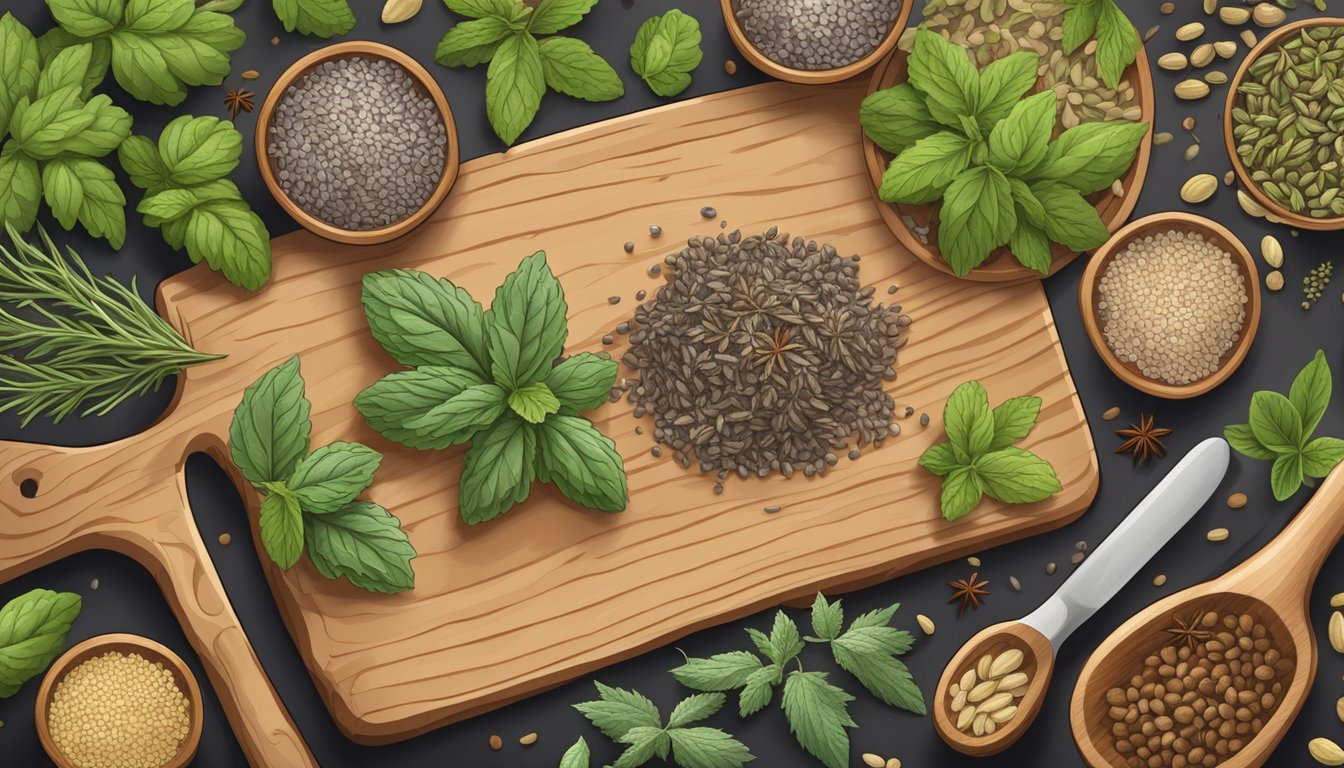Horehound (Marrubium vulgare) is a medicinal herb prized for its therapeutic properties and distinctive flavor. Gardeners and herbalists often seek to cultivate this versatile plant, but obtaining horehound seeds can sometimes be challenging. For those unable to source horehound seeds, several alternatives can be used to grow plants with similar characteristics or to replicate the herb’s flavor in recipes.
These substitutes range from other mint family members to herbs with comparable medicinal properties. Some options may offer similar bitter notes or aromatic profiles, making them suitable replacements in both culinary and medicinal applications. Understanding these alternatives can help gardeners and herbalists maintain diverse and functional herb gardens even when specific seeds are unavailable.
Exploring horehound seed substitutes opens up new possibilities for herbal enthusiasts. It allows for experimentation with different plant varieties and can lead to discovering unique flavor combinations or medicinal blends. Whether growing herbs for personal use or preparing traditional remedies, having knowledge of these alternatives ensures continued access to plants with properties akin to horehound.
Understanding Horehound

Horehound is a versatile herb with a rich history of medicinal and culinary uses. This hardy perennial belongs to the mint family and offers a range of applications in traditional remedies and food preparation.
Botanical Profile of Horehound
Marrubium vulgare, commonly known as horehound, is a robust perennial plant native to Europe. It thrives in various climates and can grow up to 2 feet tall. The plant features distinctive gray-green leaves with a fuzzy texture and produces small pink or white flowers in clusters.
Horehound’s ability to self-sow makes it easy to propagate. Gardeners can start seeds indoors 6-8 weeks before the last frost or sow them directly in the garden. The plant prefers well-draining soil and full sun exposure.
Medicinal Properties and Uses
Horehound has been valued for centuries in traditional medicine. Its primary active compounds include marrubiin and other bitter substances that contribute to its therapeutic effects.
Common medicinal uses include:
- Treating sore throats and coughs
- Aiding digestion
- Reducing inflammation
Horehound is often used in cough drops and syrups due to its expectorant properties. To prepare a homemade remedy, steep fresh or dried leaves in hot water to make a tea.
Culinary and Other Applications
Beyond its medicinal uses, horehound finds its way into various culinary creations. Its bitter flavor adds depth to certain dishes and beverages.
Popular culinary applications include:
- Horehound candy (a traditional hard candy)
- Flavoring for liqueurs and bitters
- Ingredient in savory sauces and marinades
The herb also serves non-culinary purposes. Its aromatic properties make it suitable for use in potpourri and natural air fresheners. Some gardeners plant horehound as a companion plant to deter pests from vegetable gardens.
Cultivating Horehound

Horehound is a hardy perennial herb from the mint family. It thrives in full sun and tolerates poor soils, making it relatively easy to grow. Proper planting and care are essential for successful cultivation.
Ideal Growing Conditions
Horehound prefers full sun exposure but can tolerate partial shade. It grows best in well-draining soil with a pH between 6.0 and 7.0. This resilient herb adapts to poor soils and doesn’t require rich, fertile ground.
As a member of the mint family, horehound can spread aggressively. Plant it in containers or designated areas to control its growth. It makes an excellent companion plant for peppers and other vegetables.
Horehound is drought-tolerant once established. Water young plants regularly until they develop strong root systems.
Planting and Care Instructions
Sow horehound seeds directly in the garden after the last frost date. Space plants 12-18 inches apart in rows 2-3 feet apart. For indoor starts, sow seeds 6-8 weeks before the last frost.
Press seeds lightly into the soil surface without covering them, as they need light to germinate. Keep the soil consistently moist during germination.
Thin seedlings when they reach 2-3 inches tall. Mulch around mature plants to retain moisture and suppress weeds.
Prune horehound regularly to maintain its shape and prevent self-seeding. Harvest leaves before the plant flowers for the best flavor.
Tips for Healthy Germination
Horehound seeds can be challenging to germinate. Cold stratification improves germination rates. Place seeds in moist sand in the refrigerator for 4-6 weeks before planting.
Maintain soil temperatures between 60-70°F (15-21°C) for optimal germination. Use a heat mat if necessary.
Provide consistent moisture during germination. Use a fine mist spray to avoid disturbing the seeds.
Be patient, as horehound seeds may take 14-21 days to sprout. Thin seedlings to one per cell or pot when they develop true leaves.
Harden off indoor-started seedlings gradually before transplanting outdoors. This process helps them adjust to outdoor conditions.
Substitutes for Horehound Seeds

Horehound seeds can be replaced with several alternatives, depending on the intended use. These substitutes come from similar herb families or offer comparable properties for medicinal and culinary applications.
Comparable Herbs in the Mint Family
Mint family herbs provide excellent substitutes for horehound seeds. Peppermint and spearmint offer similar cooling properties and can be used in teas or confections. Lemon balm brings a citrusy note while retaining the minty undertones. Thyme, another mint relative, works well in both culinary and medicinal contexts.
For sore throat remedies, sage makes an effective alternative. Its antimicrobial properties closely mimic those of horehound. Rosemary can replace horehound in savory dishes, adding a piney flavor and aroma.
Alternatives Based on Desired Use
For medicinal uses, marshmallow root serves as a suitable substitute. It soothes sore throats and coughs, much like horehound. Licorice root offers similar expectorant properties and adds sweetness to herbal preparations.
In culinary applications, caraway seeds can replace horehound in candies and beverages. They provide a comparable earthy flavor with hints of anise. For baking, fennel seeds offer a sweet licorice taste that resembles horehound’s flavor profile.
Mullein leaves work well in teas and throat-soothing preparations. They possess similar expectorant qualities to horehound. For digestive benefits, chamomile serves as a gentle alternative, offering soothing properties for the stomach and throat.
